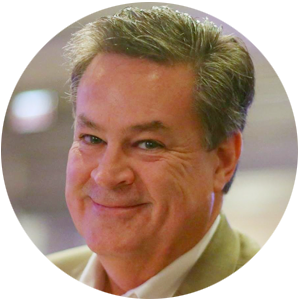January 2022
Insights from Steve Pacheco
President & CEO, American Advertising Federation

Auld Lang Syne
I’m not Scottish…but I can sure appreciate a good tradition as well as the next non-Scottish person.
The classic New Year’s Eve ballad—"Auld Lang Syne" by Scottish poet and lyricist Robert Burns, who manages to at once—cherish all of the old acquaintances and all of the fond memories associated with them at the end of a year. In this poem/song/short story, there are two persons featured. The speaker of the poem and another who accompanies him while he sings the song. This song has been sung (badly) by millions of wild revelers at New Year’s Eve events all across the globe. (It helps that you don’t have to know all the lyrics to join in).
Traditionally, “Auld lang syne” is sung to bid farewell to the year just passed at the stroke of midnight on New Year's Eve. By extension, it is also often heard at funerals, graduations, and as a farewell or ending to other occasions; for instance many branches of the Scouting movement use it to close jamborees and other functions. It can rally a group simply by the first few melodies.
The original text is actually from a Scots-language poem written by Robert Burns in 1788, but based on an older Scottish folk song. In 1799, it was set to a traditional tune, which has since become standard. "Auld Lang Syne" is widely considered a classic folk song and has been recorded by hundreds of artists and has withstood over 220 years of playing, singing and celebrating.
The poem's Scots title may be translated into standard English as "old long since" or, less literally, "long long ago", "days gone by", or "old times". Consequently, "For auld lang syne", as it appears in the first line of the chorus, might be loosely translated as "for the sake of old times".
What we can all agree on, is that it sums up the year just past and seeks to memorialize and celebrate all that we have come through to get where we are now.
The phrase "Auld Lang Syne" is used universally to wrap up one year and ring in a New Year full of promise and hope and optimism. I think we can all get behind that right now!
Should auld acquaintance be forgot,
and never brought to mind?
Should auld acquaintance be forgot,
and auld lang syne*?
For auld lang syne, my jo,
for auld lang syne,
we'll tak' a cup o' kindness yet,
for auld lang syne.
And surely ye'll be your pint-stoup!
and surely I'll be mine!
And we'll tak' a cup o’ kindness yet,
for auld lang syne.
And as we ring in a New Year, we should consider the same rhetorical question contained in this classic, is it right that old times simply be forgotten? My answer is a resounding NO!
I’d much rather focus on and remember long-standing friendships made, celebrations shared and fun memories that were formed. I know that 2021 was a glass half full, but it also was seen as a turning point for so many things.
For the AAF, it meant a lot. New Club leadership was sworn in mid-year. Some AAF Clubs held in person meetings and events. Many AAF College Chapters went Back to School and resumed in person classes on campus. And we returned to LIVE in person events with our AAF Advertising Hall of Achievement and Council of Governors Meeting and Fall Board Meeting in New York in November.
And while there is a whole lot about 2021 that I know we’d all like to just forget and never bring up again—I do believe that 2022 will bring a new level of kindness and humanity that we will all be happy to see.
So, cheers to the New Year and all the promise that it holds. Let’s make the best of it!
—Steve
<<<Get more Industry Insights
Posted: January 2022